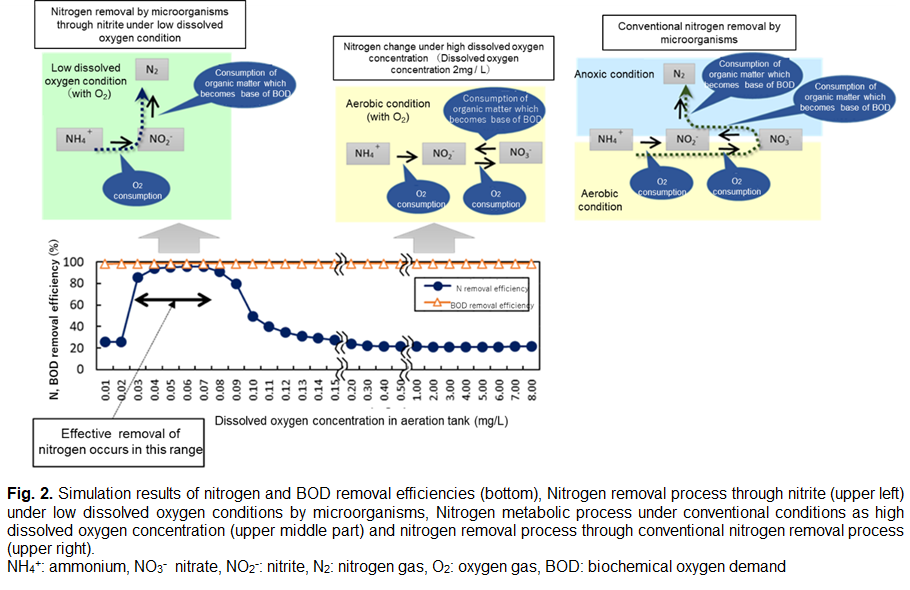Nitrogen removal efficiency improved more than 5-fold at low dissolved oxygen
The Institute of Livestock and Grassland Science, NARO (NILGS) has revealed that the nitrogen removal efficiency can be improved by more than 5-fold at low concentration of dissolved oxygen in continuous aerated activated sludge treatment, a popular method for treatment of swine wastewater, based on a small-scale experiment of 1/60,000 and simulation study. This study is expected to pave way for the development of an efficient technology that can greatly improve the nitrogen removal efficiency by simple measurement and control method of dissolved oxygen concentration in the aeration tank.
Overview
In swine farms, nitrogen contained in livestock wastewater is reduced by purification before the wastewater was discharged to the public water body. The concentration of nitrogen contained in wastewater is regulated by the Water Pollution Prevention Act. Although provisional wastewater standards are adopted currently in the livestock farming, it is expected that the regulation would become stricter. The continuous aeration type activated sludge treatment facilities are widely used in farms, and it is necessary to improve the nitrogen removal ability in the facilities.
Therefore, the Institute of Livestock and Grassland Science, NARO (NILGS) in collaboration with the French National Research Institute of Science and Technology for Environment and Agriculture (IRSTEA) investigated the optimum conditions for nitrogen removal in continuous aerated activated sludge treatment by 1/60,000 small scale experiments and simulations of standard facilities. At low dissolved oxygen concentration (about 0.04 to 0.08 mg/L) in the aeration tank, the nitrogen removal efficiency increased by around 50 points and can reach up to 60% or more as compared with conventional treatment conditions (dissolved oxygen concentration = 1.7 to 2.6 mg/L).
Furthermore, it was necessary to reduce biochemical oxygen demand (BOD) during the purification process, and BOD has been successfully removed even under the low dissolved oxygen concentration. It is also possible to reduce the aeration rate under the low dissolved oxygen concentration. Since the consumption of energy for aeration of the facility is reduced, it is expected that operating cost can be reduced.
With this technology, the nitrogen removal efficiency can be greatly improved with simple improvements such as addition of measurement and management equipment of dissolved oxygen concentration in the aeration tank at the activated sludge treatment facility in swine farms. Experiments are currently planned in pilot plant facilities with the aim to start on site demonstration from FY2019.
For Inquiries
Contact: http://www.naro.affrc.go.jp/english/inquiry/index.html
Publication
Miyoko Waki, Tomoko Yasuda, Yasuyuki Fukumoto, Fabrice Beline, Albert Magri (2018) Treatment of swine wastewater in continuous activated sludge systems under different dissolved oxygen conditions: reactor operation and evaluation using modelling. Bioresource Technology 250:574-582, https://doi.org/10.1016/j.biortech.2017.11.078
Supplementary Information






